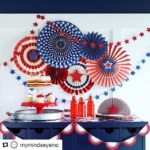Designer Profiles Features
April 14, 2010 •
Alan Friedman
How a reluctant entrepreneur built a large-ish business filling a little-ish niche.
The first time Alan Friedman’s eyes blink at you from the Great Arrow Graphics’ Web site, you’re sure your mind is playing tricks on you. But like the eyes in the painting that follow Scooby-Doo and the gang, they blink again when you turn away. That’s when you know: Alan Friedman is not your typical businessman, and Great Arrow Graphics is not your typical greeting card manufacturer.
Originally a T-shirt company, the current incarnation of Great Arrow came about in 1980, when Friedman and his wife, Donna Massimo, bought out their partners. With Friedman’s interest in silk-screen printing as an art form on paper, the two started formulating a response to the then-burgeoning counter-culture movement in greeting cards.
People were bored with the bland and mass-produced. They wanted something handmade, something with wit, something that could enjoy a second life framed. And so Friedman and Massimo cultivated Great Arrow Graphics’ trademark look — silk-screened cards showcasing bold, hand-mixed colors. With the help of the Albright-Knox Art Gallery, who bought their entire first collection (of six cards) at the 1983 National Stationery Show, the company began making a name for itself.
Although they secured a holiday order from Bloomingdale’s in 1984 (and every year thereafter for most of the next decade), it remained a small art line, with Friedman and Massimo the primary designers. According to their SKU database, established in 1998, Great Arrow Graphics now has more than 3,460 cards designed by roughly 100 independent artists — some of whom constitute the 30 they employ during peak production season. At last count, they produce two to three million cards annually, enthusiastically filling a need in this now not-so-little niche.
A self-described type-A personality who gazes at the nighttime sky because of how it counterbalances the pressures of work, Friedman is a passionate amateur astro-photographer whose work has been featured on the NASA Web site. He’s the kind of man who could spend two years making wooden toys in the basement workshop of a craft business, and is confident enough to wear a suit made entirely of paper on Good Morning America. Most importantly, he’s an artist whose prolific contributions continue to define his business.
Here, Friedman fills Stationery Trends in on how to build a successful business with intuition, wit and respect — no MBA required, and no need to sell your artistic soul.
Little Niche, Big
ST: In the early days, how did you market your business to a consumer who might have placed less of a premium on handcrafted work?
AF: 1984 was a time of expansion in our industry. There were literally hundreds of small companies at that time, looking for a small niche in a marketplace dominated by several large companies. These ‘alternative’ card lines included handcrafted cards as well as a healthy dose of glitter and risque humor.
ST: Has your approach changed?
AF: Our approach is really the same. We’ve been lucky to occupy this little niche pretty much by ourselves, so we try to fill it completely. In the ’80s, the market could handle a zillion small companies with tiny collections. Stores at that time were willing to have a hundred or more vendor relationships for greeting cards. That just isn’t the case anymore — it’s too expensive and inefficient.
ST: How do you find designers who bring a fresh perspective to the table?
AF: We have been very lucky — they usually find us. Just when we think we’ve done anything that can be done with a Christmas tree, someone sends in a package that proves us wrong. It’s hard to imagine how being wrong can be so exciting.
ST: Why do you prefer designers bring you concepts including messages?
AF: Message is hugely important in greeting cards. Our best-sellers invariably are as good inside as they are outside. While we write much of the inside copy ourselves, we find that designers who have a sense of inside message tend to have better focused concepts outside. When designing a card, it’s important to know what it will be sent for, who it will speak to, who will be buying it … all stuff that is easier to conceptualize if you have some idea what it will say inside.
The Production Process
ST: What is silk-screening?
AF: It’s a stencil technique in which a rubber-bladed squeegee forces ink through the mesh of a screen; only the open areas of the mesh allow ink to pass through. The squeegee process is repeated for each color on each card, with time between each pass for cards to dry.
ST: How did you ‘find’ your 500 different colors of inks, varnishes and finishes?
AF: Our color specialists work with the artist to model the color of their submissions to a specific release or collection. Mixed by hand from a very small number of stock pigments, they can be literally any value of tone and transparency — flat, shiny or even metallic. Of course, each has its own name, though some had to be changed so we could allow touring groups to safely peek in the ink cabinets.
ST: What informs your color palette/motifs any given season?
AF: We’ve always looked at a specific release as a collection, and often mix special colors to take a group of cards in a new direction. We began adding pigment to metallics to achieve unique ‘autobody’ colors.
Honor Thy Talent
ST: I get the impression that your business is one of those rare close-knit communities. What’s your hiring criteria?
AF: It is a close-knit group, and many have been with us a long time. A large percentage of our staff has a background in fine art and chose to accept a position here because they sensed the environment was right for them. The work can be challenging and physical, so finding employees who connect with both the product and the workplace is definitely on our criteria list. Most of our senior staff began in the printroom, taking on new roles as they gained experience. My vice-president, Lisa Samar, began with us as a printer 18 years ago.
ST: How many designers do you typically employ?
AF: We employ several full-time artists in our design department, but much of their work is preparing outside artists’ designs for silk-screening and developing color directions for cards in the line. Most of our original designs today are submitted by outside artists. We’ve published the work of more than 100 artists, with 30-50 being active at any given time.
A Reluctant Businessman
ST: How have you managed to create a successful business that maintains its integrity among artists while pulling in — let’s face it — some serious bucks?
AF: I’ve never been comfortable with a general ‘business’ agenda that hangs out on the right side of the aisle. But I’ve learned over time that there are many businesses and organizations that share my values, and I share resources and collaborate with them. I even had my face on the front page of the Wall Street Journal through my involvement with the Greeting Card Association (GCA), though I clearly came off as a bit of a kook.
Here are a couple things that have worked for me:
• Find a direction close to your heart (preferably somewhat unusual).
• Be prepared to fiddle around (setting up in a location with modest costs helps a lot!).
• Treat people openly, honestly and kindly.
• Be happy — or at least a peace with — not making a ton of money.
ST: How vital is your Web site to your business?
AF: It is a huge information tool for designers looking to find out more about us. And we keep a retail storefront because I think a Web site that doesn’t let you buy stuff is just no fun! We recently developed a high-level wholesale ordering site within GreatArrow.com to give the stores and sales reps an efficient and elegant tool that functions in real time and is open 24/7.
ST: How do you deal with the dichotomy between creative drive and economic realities?
AF: The hardest part is to remain fresh creatively. I guess I still have an idea or two left, but the demand for newer and better products is exhausting. Our method of manufacturing allows us to keep relatively small inventories and production runs, which allow us to push the envelope with some designer images that have less than universal appeal.
ST: What do you consider current industry trends?
AF: Bang for the buck, innovation, made in America, green thoughtfulness, humor, hopeful but cautious optimism — these are values I feel will shape the marketplace this year.
Life is Good
ST: Tell us about your philanthropic endeavors.
AF: We are a long-time UNICEF contributor. Kofi Annan once sent one of my cards as his holiday message of peace. Also, we became involved with Paint Box Project of the Roswell Park Cancer Institute three years ago. The art is generated by kids at a party in our studios; the finished cards are sold as a part of our holiday collection. The royalties from card sales (along with our matching donation) are returned to fund research. Over the years we have participated in a number of excellent community projects, but this is the most ambitious and rewarding.
ST: How do you ensure your products and practices have the least possible negative impact on the world?
AF: We use recycled materials whenever we can in our cards, envelopes and packaging — cornstarch peanuts. I also believe one of the most important things we can do is produce products of lasting beauty and value.
ST: How do you stay inspired year after year?
AF: I have a fantastic bunch of co-workers. I worked long hours for many years, and I have a tendency to be controlling both creatively and organizationally. A brush with middle-age health issues about eight years ago helped me to put my words into action.
My staff has given me something I could never get in the early days — a little freedom to explore other aspects of life — parenthood, astronomy, exercise, working in the GCA — simple stuff, but it’s really important to have this balance to stay inspired.
Amanda Avutu is a freelance writer and the owner of Lucky Guppy Marketing, a boutique firm that specializes in copywriting press releases, Web content and the like. She and her family live in Cleveland, where she pines for sumptuous papers. You can reach her at [email protected].



















